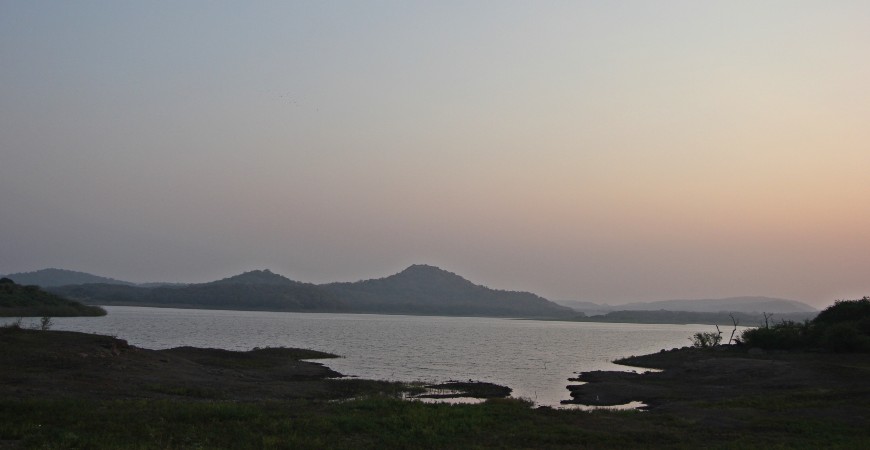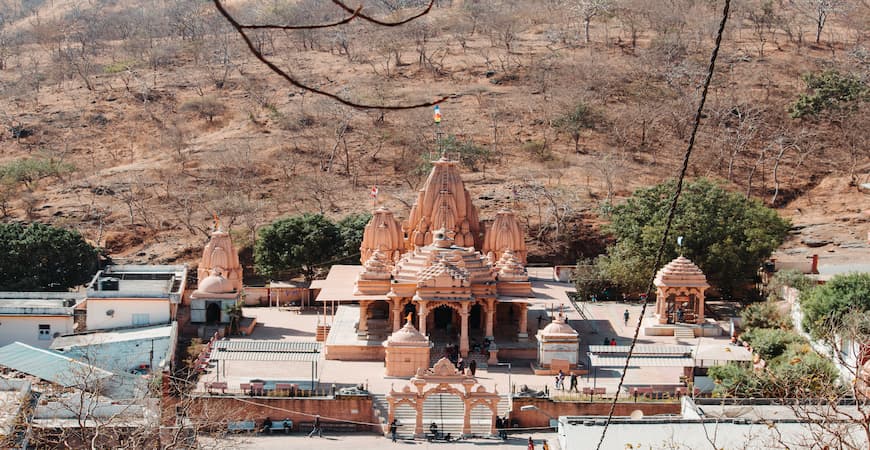HOME DESTINATIONS Gir
Uparkot Fort
One of the most interesting forts in Gujarat, the Uparkot Fort is said to have once withstood a 12-year siege. The fort is also famous for 2 stepwells – Adi Kadi Vav and Navghan Kuvo and the nearby Uparkot Caves, which are a part of the Junagadh Buddhist Cave Groups.

This ancient fort is believed to have been built in 319 BC by the Mauryan emperor Chandragupta, though it has been extended many times. In places, the ramparts reach 20m high. Remnants of different rulers can be seen in some parts of the structure. For example, on the rampart above the gate is an inscription of Mandalika III, dated 1450. Another emblem is in the form of a 10 inch bore cannon of bell-metal - 17 feet long and 4 feet 8-inch round at the mouth. This gun was brought from Diu, where it was left by the Ottoman Turks when they were defeated in the Siege of Diu in the mid-16th century. The views over the city and east to Girnar Hill are superb, and within its walls, there is a magnificent former mosque, a set of millennia-old Buddhist caves and two fine step-wells.
Adi Kadi Vav
Carved entirely out of hard rock, Adi Kadi Vav is a 15th Century stepwell, found inside the Uparkot Fort. There is a narrow flight of 120 stairs cutting down through the stone to reach the well deep in the stone. There are two different legends that claim to explain the name of the well. One says that the king ordered a stepwell to be built and workers excavated down into this hard stone, but no water was found. The royal priest said that water would only be found if two unmarried girls were sacrificed. Adi and Kadi were the unlucky ones chosen for this and after their sacrifice, water was found. The other story, less fantastic but probably more likely, claims that Adi and Kadi were the names of the royal servant girls who fetched water from the well every day. Either way, people still hang cloth and bangles on a tree nearby in their memory.
Navghan Kuvo
Named after the Chudasama king Ra Navaghana most likely built during his reign in 11th century. It is believed to have been completed by his son Khengara. According to scholars, this is one of the oldest examples of stepwells in India. A small staircase entered through an arched doorway leads to the forecourt. The well is located at the far end of the forecourt. The water in the well is reached by a circular staircase which is cut in the soft rock behind the thin stone wall of the shaft of well. The flight of the steps, first straight and then transverse, runs right around the shaft. The array of square holes in the stone wall of the shaft illuminate and cool the inside.
Uparkot Caves
These caves located at Uparkot beyond the 300 ft deep moat, close to Adi Kadi vav, were carved in 2nd–3rd century A.D. These so-called “Buddhist Caves” around Uparkot are not actually caves, but three separate sites of rooms carved out of stone to be used as monks’ quarters. They are all over 2000 years old and were carved into the rock during Emperor Ashoka’s reign. These are considered the earliest monastic settlement in the area. It is said that after several years of use, they were abandoned because the construction had water seeping in due to cracks, and became unlivable. Many accounts say that after this, the monks left for Maharashtra, where they went on to carve many similar and more elaborate structures.
Good to Know:
Location: 59 km from Sterling Rudra Gir
Timings: 7:00 AM - 7:00 PM
Best time to visit: November - February
Other Attractions

Gir National Park
1 hrThe only place in India where you can see the Asiatic Lion in the wild, a trip to the Gir National Park is a must do for wildlife lovers.

Somnath Temple
3 hrOften called the Pride of Gujarat, it is one of the most important pilgrimage sites for Hindus in India. It is believed to be the first among the twelve Jyotirlinga shrines of Lord Shiva.

Kamleshwar Dam
1 hrKnown for its population of birds and mugger crocodiles, Kameshwar Dam is a sight to behold in Gir.

Durbar Hall Museum
2 hrsThe former palace of the Nawab of Junagadh has since been converted into a museum housing the prized possessions of the Junagadh Nawabs.

Girnar Hill
3 hrsAn ancient hill near the town of Junagadh, Girnar is famous for more than just the spectacular views. Come and discover the Ashoka edicts, Asia’s longest ropeway, and the Girnar Jain Temples.

Kankai Mata Temple
2hrsSituated deep in the heart of the Gir Forest, the Kankai Mata temple is steeped in legend, and is a major holy site for Hindu pilgrims.

Diu Island
7 hrsVisit the pristine island of Diu to experience its ultimate natural beauty. It is without a doubt one of the most beautiful beach destinations in the country.

Mahabat Maqbara Complex
3 hrMahabat Maqbara and Bahauddin Maqbra are mausoleums in Junagadh that are known for their amalgamation of Indo-Islamic, Gothic and European styles of architecture.

Sarkeshwar Beach
2 hrsBordering Junagadh and the neighbouring city of Amereli, Sarkeshwar Beach is a great place not just for relaxing by the beach but for some fun-filled water sports and activities too.

Madhavpur Beach
2 hrA sandy coastline, endowed with coconut trees, Madhavpur Beach is one of the most treasured beaches of Gujarat. The long shoreline and minimal commercial activity make this a must-visit beach in Gujarat.

Tulsi Shyam Temple and Springs
3 hrKnown particularly for its great scenic beauty, Tulsi Shyam Temple is a tourist center that is dedicated to Lord Vishnu. The temple has beautiful hot water springs which are referred to as ‘Taptodak’ in the Puranas.

